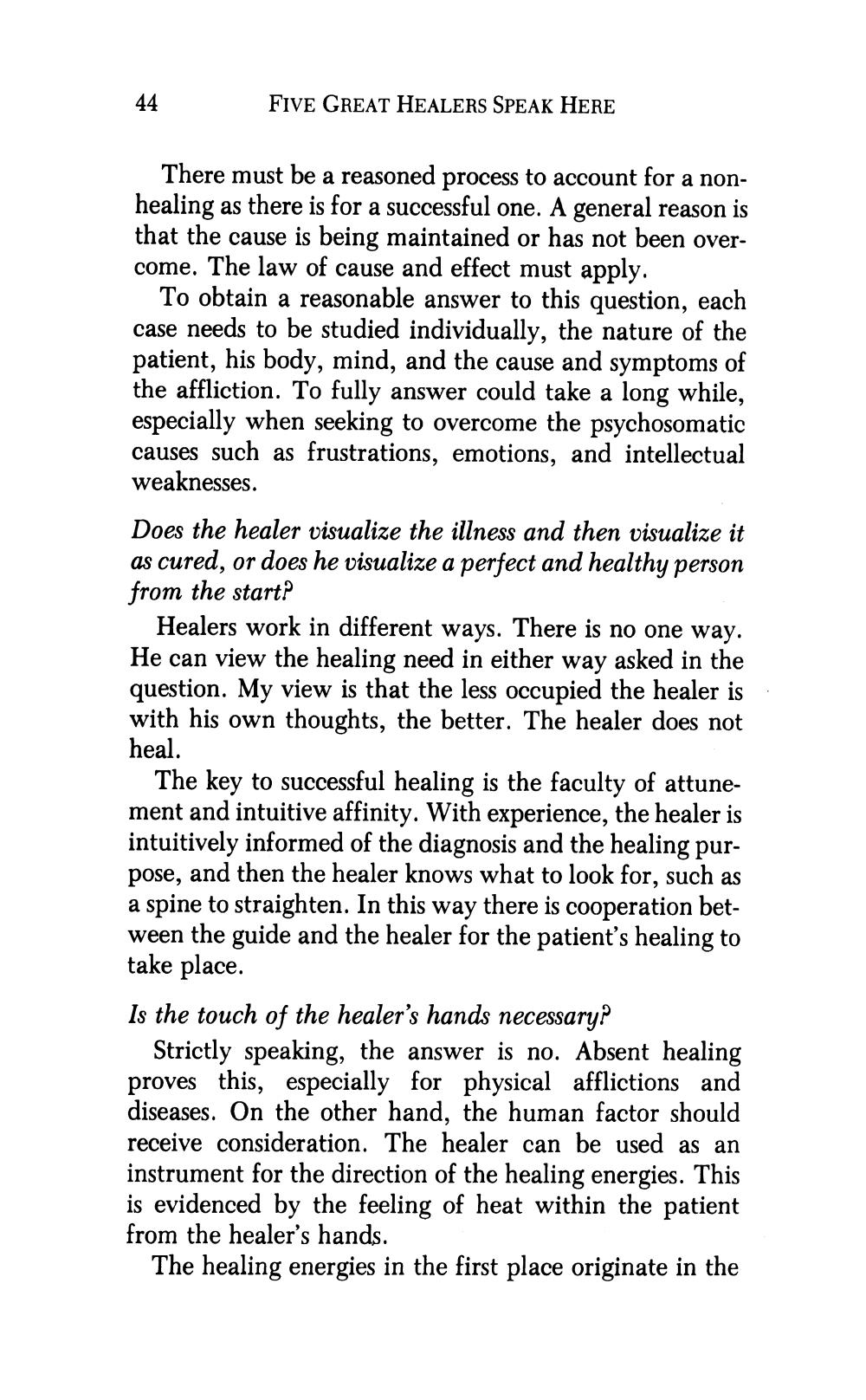________________
FIVE GREAT HEALERS SPEAK HERE
There must be a reasoned process to account for a nonhealing as there is for a successful one. A general reason is that the cause is being maintained or has not been overcome. The law of cause and effect must apply.
To obtain a reasonable answer to this question, each case needs to be studied individually, the nature of the patient, his body, mind, and the cause and symptoms of the affliction. To fully answer could take a long while, especially when seeking to overcome the psychosomatic causes such as frustrations, emotions, and intellectual weaknesses. Does the healer visualize the illness and then visualize it as cured, or does he visualize a perfect and healthy person from the start?
Healers work in different ways. There is no one way. He can view the healing need in either way asked in the question. My view is that the less occupied the healer is with his own thoughts, the better. The healer does not heal.
The key to successful healing is the faculty of attunement and intuitive affinity. With experience, the healer is intuitively informed of the diagnosis and the healing purpose, and then the healer knows what to look for, such as a spine to straighten. In this way there is cooperation between the guide and the healer for the patient's healing to take place. Is the touch of the healer's hands necessary?
Strictly speaking, the answer is no. Absent healing proves this, especially for physical afflictions and diseases. On the other hand, the human factor should receive consideration. The healer can be used as an instrument for the direction of the healing energies. This is evidenced by the feeling of heat within the patient from the healer's hands.
The healing energies in the first place originate in the




